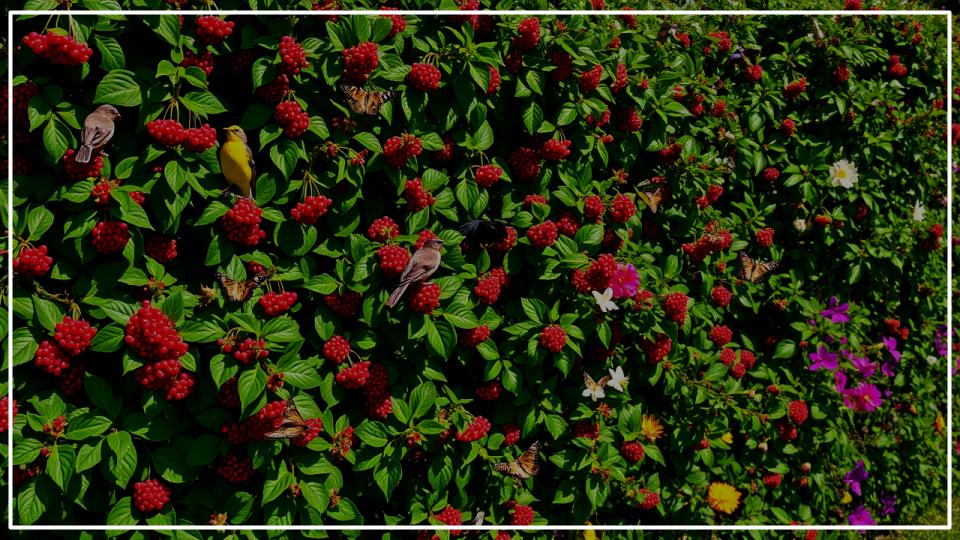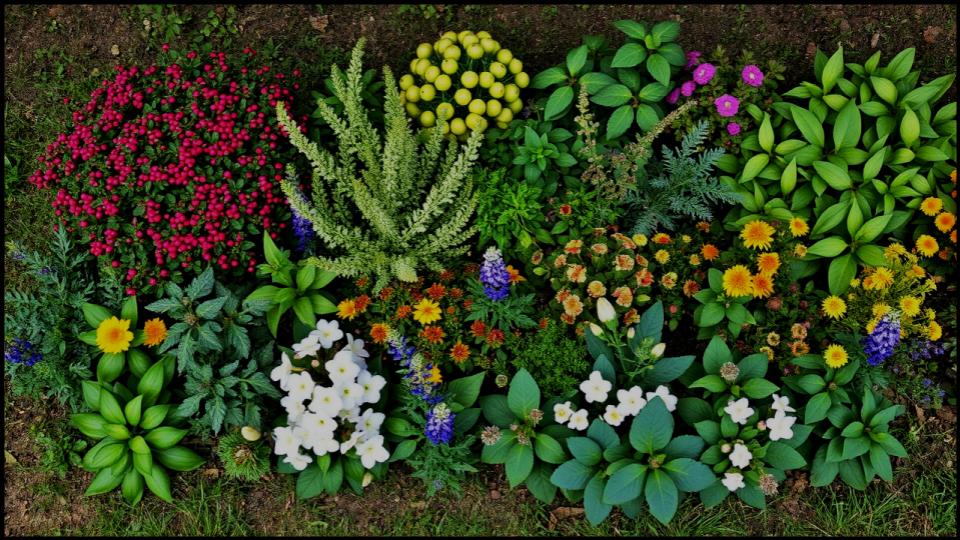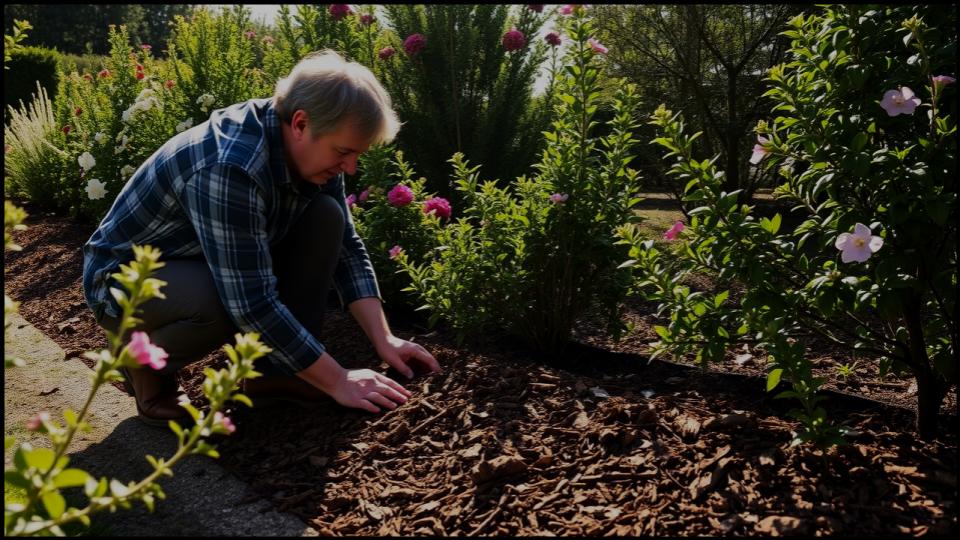Imagine a living tapestry in your garden, not merely a boundary, but a vibrant ecosystem teeming with life. This isn’t a whimsical dream, but an achievable reality when you learn how to grow a wildlife hedge. More than just a green wall, a thoughtfully designed wildlife hedge serves a dual purpose: it offers vital shelter and a consistent food source for a myriad of beneficial creatures, from songbirds and butterflies to small mammals and essential pollinators. In this comprehensive guide, we’ll explore the art and science of creating such a dynamic habitat, transforming your garden into a verdant sanctuary where nature thrives and truly comes alive. You’ll discover the best plants, design principles, and maintenance tips to cultivate a hedge that gives back in abundance.
Key Takeaways
- Diverse Plant Selection is Key: Choose a variety of native plants for year-round interest, berries, nectar, and nesting sites.
- Layering Creates Rich Habitat: Incorporate groundcover, shrubs, and small trees for multi-level shelter.
- Water is Essential: Include a water source nearby to attract and sustain wildlife.
- Embrace Imperfection: A slightly “wilder” hedge provides better cover and more natural food.
- Minimize Chemical Use: Avoid pesticides and herbicides to protect the delicate ecosystem you’re building.

Why a Wildlife Hedge Matters: A Living Legacy
In my own garden, I’ve witnessed firsthand the incredible transformation that occurs when you dedicate space to grow a wildlife hedge. It’s more than just an aesthetic addition; it’s an ecological imperative. As urban and suburban development expands, natural habitats diminish, making our gardens crucial havens for local flora and fauna. A well-planned hedge provides essential cover from predators and harsh weather, offering safe nesting sites for birds and secure hiding places for small mammals. Beyond shelter, it’s a natural buffet, providing a continuous supply of nectar, pollen, seeds, and berries throughout the seasons, supporting the entire food web. This commitment to biodiversity not only enriches your garden but contributes to the larger health of your local ecosystem.
Choosing the Right Plants: Building Your Biodiversity Blueprint
The foundation of a thriving wildlife hedge lies in thoughtful plant selection. Prioritizing native species is paramount, as they are adapted to local conditions and have co-evolved with native wildlife, providing the most effective support. According to the National Wildlife Federation, native plants are four times more attractive to native bees and other pollinators than non-native plants. When selecting, think about a diverse mix that offers sequential blooming times and fruiting periods to ensure a year-round food supply. Consider a blend of deciduous and evergreen plants for continuous cover.
Here are some of my go-to varieties for a robust wildlife hedge, offering both beauty and ecological benefits:
- For Berries & Winter Food:
- Hawthorn (Crataegus spp.): A classic choice, producing abundant red berries cherished by birds like robins and thrushes. Its thorny nature also offers excellent protective cover.
- Elderberry (Sambucus canadensis): Fast-growing with prolific dark berries, a favorite of many bird species, and its flowers are a vital nectar source for insects. In my experience, elderberries are incredibly forgiving and establish quickly.
- Serviceberry (Amelanchier spp.): Early spring flowers provide nectar, followed by edible berries in early summer, a treat for both birds and humans.
- Bayberry (Myrica pensylvanica): A semi-evergreen shrub, especially valuable for its waxy berries that persist into winter, providing crucial sustenance when other food sources are scarce.
- For Nectar & Pollen (Flowering Shrubs):
- Buttonbush (Cephalanthus occidentalis): Its unique, spherical white flowers are a magnet for butterflies, bees, and other pollinators in summer. Thrives in moist conditions.
- Viburnum (Viburnum spp.): Many native viburnum varieties offer beautiful flowers in spring, followed by berries in fall, serving dual purposes.
- Virginia Sweetspire (Itea virginica): Fragrant white flower spikes in early summer attract a host of pollinators, and its fall foliage is stunning.
- For Structure & Shelter (Evergreens & Small Trees):
- Eastern Red Cedar (Juniperus virginiana): Provides year-round evergreen cover and small, blue “berries” (cones) that are a food source for cedar waxwings and other birds.
- Holly (Ilex opaca or Ilex verticillata): Native hollies offer dense, evergreen foliage for shelter (American Holly) or brilliant red berries on deciduous varieties (Winterberry Holly) that persist into winter.
- Red Osier Dogwood (Cornus sericea): While deciduous, its vibrant red stems offer winter interest and the dense twiggy growth provides excellent cover. Its white berries are also a food source.
When planning, consider the mature size of each plant to ensure adequate spacing and prevent overcrowding. A common mistake I see is planting too close together, which limits air circulation and can lead to disease.

Designing Your Wildlife Haven: Layering for Life
The most effective wildlife hedges mimic natural woodland edges grow a wildlife hedge, featuring multiple layers of vegetation. This layering provides diverse habitats and microclimates.
- Groundcover Layer: Start with low-growing plants at the base of your hedge. Think native sedges (Carex spp.), wild strawberries (Fragaria virginiana), or native violets (Viola spp.). These provide cover for amphibians, insects, and ground-nesting birds, and some offer additional food sources.
- Shrub Layer: This is the core of your hedge. Plant a mix of the berry and nectar-producing shrubs mentioned above. Vary their heights and forms to create interest and provide different levels of cover.
- Small Tree/Tall Shrub Layer: Integrate a few taller elements like serviceberry, eastern red cedar, or a larger viburnum species. These offer higher perching and nesting sites for birds and contribute to the overall structure of the hedge.
Think about the shape of your hedge. While a straight line can be effective, a more undulating or curved design often feels more natural and provides additional nooks and crannies for wildlife. Consider the hedge’s orientation – if possible, place it where it receives ample sunlight for flowering and fruiting, ideally with some protection from strong winds.
Step-by-Step Guide to Growing Your Wildlife Hedge:
- Site Preparation (Fall or Early Spring):
- Clear the Area: Remove weeds, grass, and any debris from the intended hedge line. For larger areas, consider sheet mulching to suppress weeds naturally.
- Soil Amendment: While native plants are generally resilient, improving your soil will give them a strong start. Work in 2-3 inches of organic matter like compost. This enhances drainage, improves fertility, and encourages healthy root development.
- Assess Drainage: Ensure the site isn’t waterlogged. If so, consider creating a slight berm or choosing plants that tolerate wetter conditions.
- Planting (Early Spring or Fall):
- Dig Appropriately: Dig holes that are twice as wide as the root ball and just as deep. The top of the root ball should be level with or slightly above the surrounding soil.
- Loosen Roots: Gently tease apart any circling roots on potted plants to encourage outward growth.
- Position Plants: Place your chosen plants according to your design, ensuring proper spacing for their mature size. Remember the layering principle!
- Backfill & Water: Backfill with native soil, gently tamping to remove air pockets. Water thoroughly after planting to settle the soil around the roots.
- Initial Care:
- Mulch Generously: Apply a 2-4 inch layer of organic mulch (wood chips, shredded leaves) around the base of your newly planted hedge, keeping it a few inches away from the stems. Mulch conserves moisture, suppresses weeds, and moderates soil temperature.
- Water Consistently: During the first year, consistent watering is crucial, especially during dry spells. Deep, infrequent watering encourages stronger root development.

Care & Maintenance Tips: Nurturing Your Living Larder
Maintaining your wildlife hedge is less about rigid control and more about thoughtful stewardship.
- Watering: Once established (typically after the first year), most native plants in a wildlife hedge are remarkably drought-tolerant. However, supplemental watering during prolonged dry periods will help them thrive, especially if they are heavily laden with fruit.
- Pruning: Resist the urge to overly manicure your hedge. Minimal pruning is often best for wildlife.
- Remove Dead/Diseased Wood: Prune out any dead, damaged, or diseased branches as needed.
- Shape for Structure (Lightly): If shaping is desired, do so sparingly. Avoid harsh shearing, which removes valuable flowering and fruiting wood. Prune after flowering or fruiting cycles to ensure you’re not removing next season’s food source. In my own experience, I prefer to let my hedge develop a natural, slightly shaggy form, as this offers more nooks and crannies for wildlife.
- Thinning: If the hedge becomes too dense, thin out some interior branches to improve air circulation and light penetration, but maintain overall density for cover.
- Fertilization: Generally, native plants in well-prepared soil do not require additional fertilization. Over-fertilizing can lead to lush, soft growth that is more susceptible to pests and less beneficial for wildlife.
- Pest & Disease Management: Embrace a holistic approach. A healthy, diverse ecosystem is inherently more resistant to major pest outbreaks. Avoid chemical pesticides, as they harm beneficial insects and can contaminate food sources for birds. Hand-picking pests, introducing beneficial insects, and maintaining plant health are far more effective long-term strategies.
Enhancing Your Hedge: Beyond the Plants
To truly elevate your wildlife hedge into a haven, consider these additional elements:
- Water Source: A bird bath, a shallow dish, or even a small pond nearby will attract birds, butterflies, and other creatures, providing essential hydration.
- Log Piles/Brush Piles: At the base or within the hedge, a small pile of logs or branches offers additional shelter for small mammals, reptiles, and beneficial insects. These also decompose slowly, enriching the soil.
- Pollinator Gardens Nearby: Complement your hedge with adjacent beds of native wildflowers that offer a continuous supply of nectar and pollen, further supporting the pollinators that contribute to your hedge’s fruiting success.
- Native Grasses: Integrate clumps of native grasses at the edge of your hedge for additional nesting material and seed heads for birds.
Your Garden, A Sanctuary
Cultivating a wildlife hedge is one of the most rewarding gardening endeavors you can undertake. It’s an investment in your garden’s future, a testament to your commitment to nature, and a source of endless fascination as you observe the vibrant ecosystem you’ve helped create. Beyond the aesthetic beauty, there’s the profound satisfaction of knowing you’ve provided vital shelter and sustenance for the creatures that share our planet. So, roll up your sleeves, embrace the wilder side of gardening, and begin the journey of grow a wildlife hedge. Your garden, and the nature within it, will thank you.
Read More
These 15 Garden Water Features Will Make You Fall in Love with Your Garden Again
